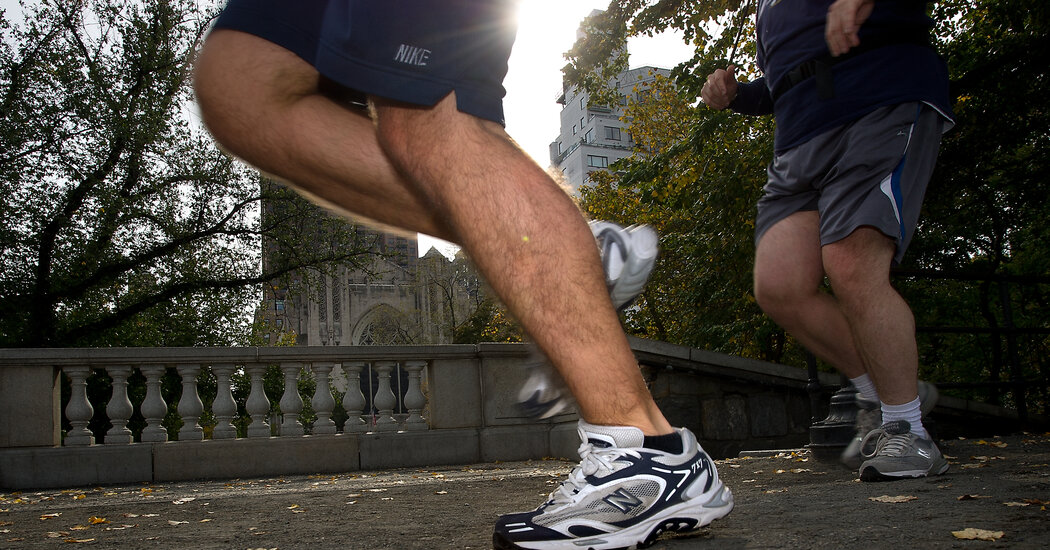Hypertension affects more than half of America’s adult population. It is a leading cause of stroke and heart attack, and often comes with no obvious early symptoms.
One of the best ways to both prevent high blood pressure and lower it is by working out (as well as an improved diet). That’s in part because consistent and frequent exercise prompts your body to form new capillaries.
“It’s like producing extra release valves for your heart,” said John Bauer, the education content director for the International Sports Sciences Association. “So there’s less pressure on the existing blood vessels.”
But which exercises are the most effective? Numerous studies have found that yoga, wall sits and cardiovascular exercise are particularly helpful for lowering blood pressure. Tai chi is another gentle, low-stress exercise that some studies suggest is especially good for hypertension.
“Any exercise will help, but it’s the framework you put around it that matters most,” said Dr. Lili Barouch, the director of sports cardiology and an associate professor of medicine at Johns Hopkins University.
This framework should follow a few rules around things like intensity, regularity and effective warm-ups, and include regular consultations with your doctor. Blood pressure spikes can cause health emergencies, though other effects are more subtle. If at any point you feel lightheaded or dizzy, stop immediately and check in with a health care provider.
Blood pressure dos and don’ts
If you are dealing with elevated blood pressure and you are new to exercise (or out of practice), take a longer warm-up than you might otherwise, Mr. Bauer said. Spend at least 10 minutes at that lower intensity, aiming for a perceived exertion level of about three out of 10.
“If you go right from resting to working, you’ll have a bigger spike in heart rate and also blood pressure,” he said.
But don’t be afraid to get your heart rate up once you are ready. “Unless you have severely elevated blood pressure, it’s OK go for a vigorous walk, for instance,” Dr. Barouch said. That could also mean walking faster, hiking on a trail or carrying weight.
Rather than focusing strictly on your heart rate, pay attention to how your body feels. This is especially true if you are on blood pressure medication, as some may blunt your heart’s response, throwing off your goals.
If you are concerned about blood pressure and new to fitness, don’t try jumping into high intensity interval training, which causes more rapid fluctuations in your heart rate and blood pressure. You also want to avoid exercises that require rapidly getting up and down from the floor, like burpees, said Dr. Melissa Tracy, a cardiologist at Rush University Medical Center in Chicago.
“Burpees require a lot of muscles and changing positions, and you might not breathe properly through them,” she said. With consistent exercise and a normalized blood pressure, however, you can make burpees a longer-term goal.
The same holds true for heavy weight lifting, during which you might inadvertently hold your breath through your effort, Dr. Tracy said. “If you’re hypertensive, you decrease the blood returning to your heart and your blood pressure can drop,” she added. “When you release the breath, your heart rate then shoots up and your blood pressure can overshoot.”
Once your body becomes used to exercise, gradually increase the difficulty of your routine to allow for continual progress. “Over time, you can start picking up the pace, swinging your arms, adding inclines or finding other ways to increase your heart rate,” Dr. Tracy said.
When you have finished your workout, take extra time to cool down, allowing your heart rate and blood pressure to ease back to base line.
In general, aim to exercise for at least 30 minutes, unless you find that difficult to fit into your day. “If you need to break it up into smaller increments, like 10 to 15 minutes, you can still see some improvement to your blood pressure,” Dr. Barouch said.
Once you’re accustomed to exercising for 30 minutes at a time, working up to about 60 minutes’ worth of exercise may further enhance the benefit to blood pressure. “After that, there’s no harm, but probably no additional value as far as blood pressure is concerned,” Dr. Barouch added.
Setting goals
The Centers for Disease Control and Prevention recommends doing at least 150 minutes of moderate aerobic activity, 75 minutes of vigorous aerobic activity or some combination each week. That can be your goal, but while you are getting started with a fitness routine, reaching that level may not be realistic. “For some people, exercising several times a week isn’t even in play at the beginning,” Mr. Bauer said.
And while you might be tempted to cram all of your exercise into the weekend, that’s not the best way to lower your blood pressure. Instead, aim to intentionally move your body on most days. “That’s a more effective approach than being a weekend warrior,” Dr. Barouch said.
Lastly, if you have hypertension, it’s important to consult with your doctor before trying any new exercise regimens, and remember that not everyone can manage it with lifestyle changes alone.
But if you are consistent, an exercise routine can start lowering your blood pressure in as little as four weeks. Research has not definitively proven that one form is better than any other, so choose the exercise you enjoy most — you’ll be more likely to stick with it.
Amanda Loudin is a freelance writer covering health and science.







